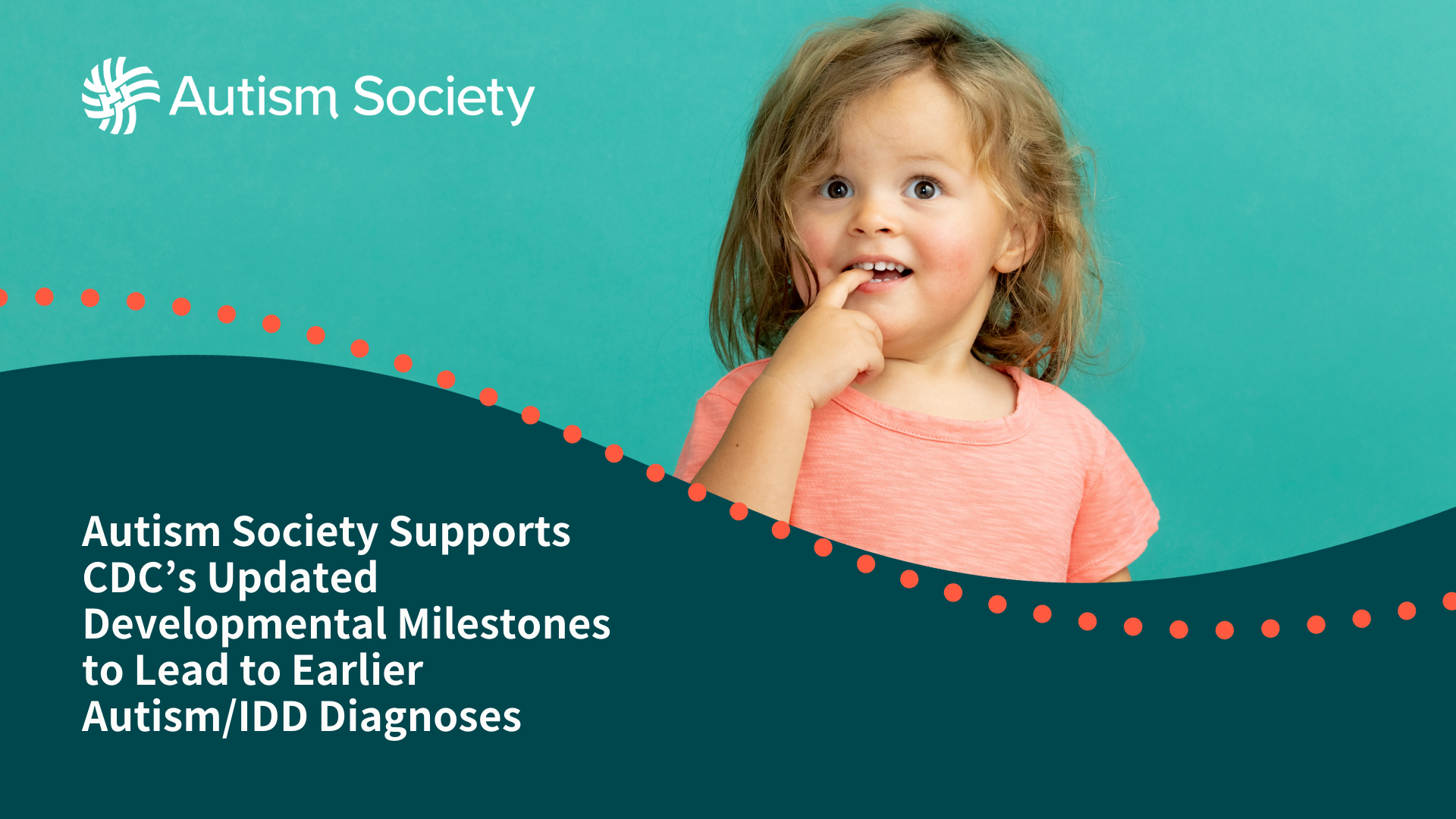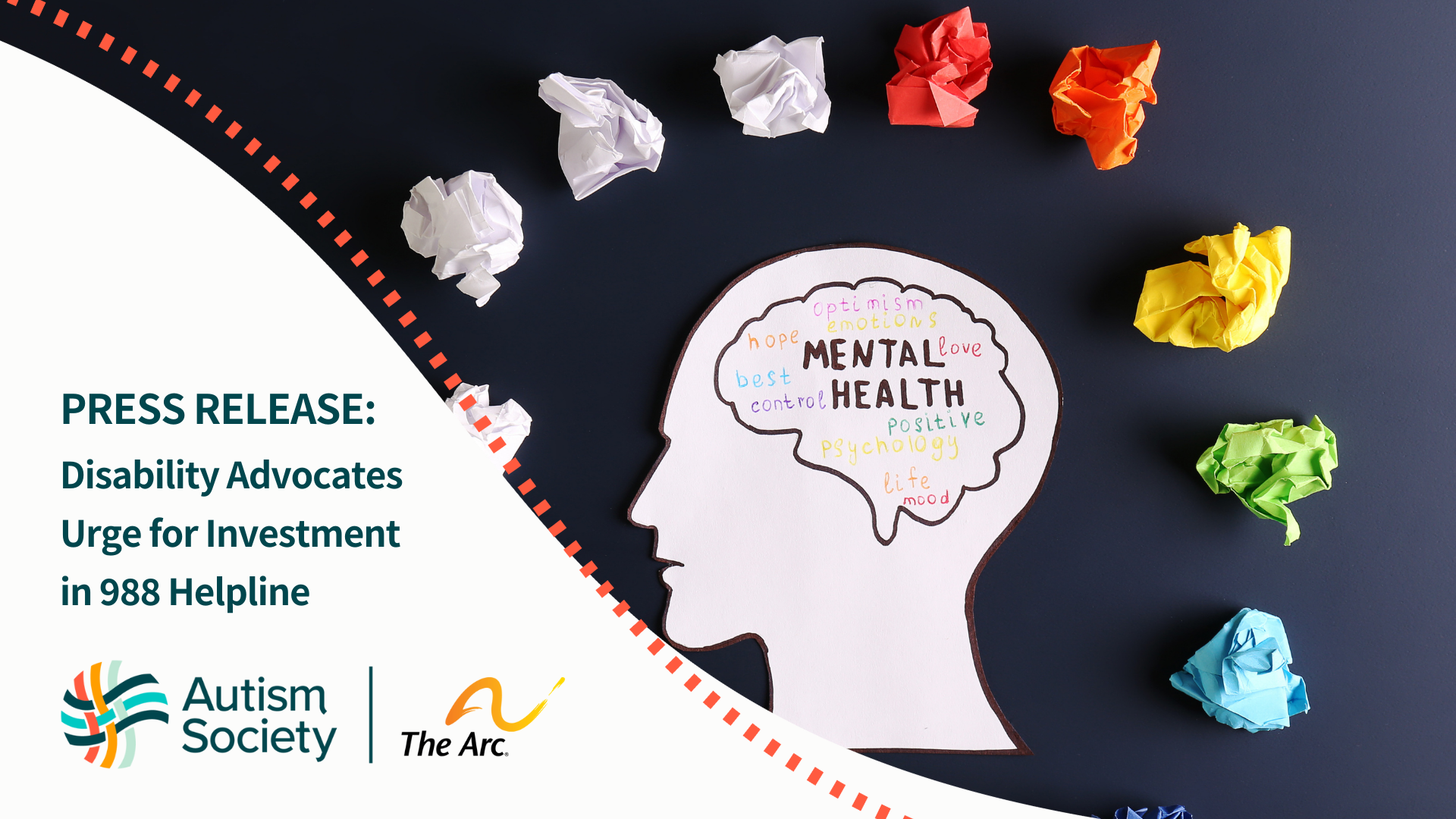
Clear Developmental Milestone Guidelines Will Help Caregivers Learn the Signs, Act Early.
Last week the Centers for Disease Control and Prevention (CDC) unveiled its revised version of the developmental milestone checklist, which helps caregivers and physicians identify children with Autism and developmental disabilities. Developed with the American Academy of Pediatrics (AAP) as part of the CDC’s, “Learn the Signs. Act Early.” program, the efforts strongly support the Autism Society’s advocacy to push for earlier and better screening and diagnosis.
First launched in 2004, the CDC released the checklist’s first-ever update with significant changes intended to make it easier to identify developmental delays and reduce the “wait-and-see” approach. Originally, the checklist stated that at least 50% of children at a given age would be able to demonstrate a listed milestone, while the updated version says the milestones are met by 75% of children at the specified age. The CDC argues that when a strong majority of children are reaching a milestone, parents/caregivers and professionals can address concerns sooner, perform additional screening, and discuss next steps for early interventions.
“The Autism Society promotes early identification and access to effective interventions as early as one-year-old, but before the age of three. We affirm that children should be screened for Autism at least three times before age three, at 9 months, 18 months, and 24 or 30 months,” states Christopher Banks, President and CEO of the Autism Society. “Early diagnosis helps a person receive resources that can support the choices and opportunities needed to live fully.”
The advantages of early interventions cannot be overemphasized. Children who receive early intervention can make tremendous strides in their overall skill and reduce the lifetime care costs by up to two thirds.
To develop the revised milestones, the CDC worked with experts in early childhood development from the AAP who conducted a comprehensive review, as well as set new criteria for the materials. Checklists for 15 and 30 months were added so that there is one checklist to align with every recommended well-visit between two months and five years old. The group addressed concerns that reduce confusion between similar milestones across ages, and instead sought to show skill progression when possible.
The revised checklist also includes expanded tips and activities to support children’s development for all ages; additional open-ended questions to help facilitate conversations with healthcare providers and others; embedding “Red flags/warning signs” within the milestones to reduce confusion about when to take action on missing milestones; and a redesigned Milestone Moments booklet, adding a new screening “passport.”
If there are consistent delays, regression, or a change in a child’s behavior, seek the opinion of qualified professionals and/or a pediatrician to conduct additional screenings. Please visit the Autism Society’s website at AutismSociety.org to learn more about Autism, screening and diagnosis; or contact our National Helpline at 800-3-AUTISM, info@autism-society.org, or here.
Print the milestones checklist here.
Acceda a los indicadores por aqui.
Share:




